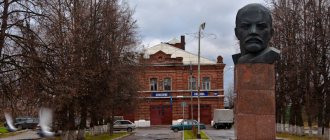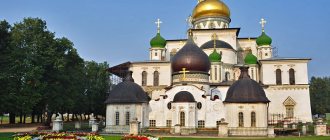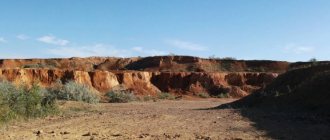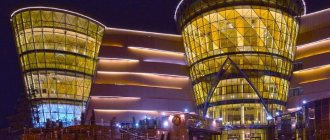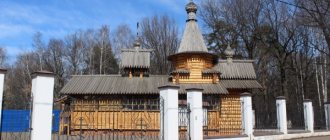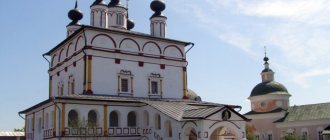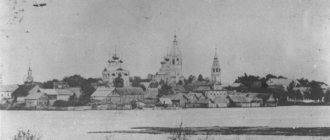Kovrov is a unique city of its kind, in which Russian history and modernity are closely intertwined.
The city was founded in 1778. The first settlement on this site was erected thanks to Yuri Dolgoruky, it was named Elifanovka. Later, thanks to Andrei Bogolyubsky, this village was renamed Rozhdestvenskoye. In the sixteenth century, the family estate of the Kovrov princes was located in the village. It was from their surname that the modern name of the city was formed.
The city of Kovrov is famous for its defense industry and heavy engineering, motorcycles, textile production and Kovrov toys.
How to get to Kovrov?
From Moscow you can get to the city by train in about four hours. Trains passing through Kovrov depart from Yaroslavsky, Kazansky and Kursky stations. You can also get to Kovrov through Vladimir, from where there are regular trains to Kovrov.
Buses to the city depart from the bus station in Moscow from the Shchelkovskaya metro station from nine in the morning until almost 11 in the evening, the travel time is about four and a half hours.
By car you can reach the city along the M7 highway.
Carpets in black and white colors.
There are many large and small cities on the ancient land of Vladimir, of which it is rightfully proud. One of them is Kovrov. The city is a hard worker and craftsman, ranking second in size and industrial significance after the regional center, a city famous for its revolutionary traditions, a garden city.
Kovrov is spread out freely on the banks of the beautiful Klyazma, surrounded by water meadows and light birch copses, wide fields and dense pine forests.
The beauty and bounty of nature attracted people here. More than eight centuries ago, the first Slavic settlement arose here. As the legend goes, the fortress town was called Epifanovka, named after the eldest of the prince’s warriors, who were ordered to maintain a guard post here and supply the prince’s court with game, which was found in abundance in the dense forests.
Years have passed. The Church of the Nativity of the Virgin Mary rose on the steep river bank, and from then on the village that grew here began to be called Rozhdestveno. At the beginning of the 16th century, it came into the possession of the Starodub prince Vasily Kovr and received the name Kovrovo, which has since been found in historical documents. With the establishment of the Vladimir governorship in 1778, the village received the title of a district town. In total, the new city of Kovrov had about 600 inhabitants. Until the middle of the 19th century, it developed slowly and was a quiet provincial outback.
A turning point in the history of the city was the construction of the Nizhny Novgorod Railway, which ran through Kovrov. In June 1861, railway workshops opened here, which were destined to bring glory not only to the Vladimir region, but to all of Russia. Kovrov craftsmen created the first Russian passenger and freight cars, which received the highest awards at the St. Petersburg and Moscow industrial exhibitions in the 70s and 80s.
A mechanical calico and weaving factory, an iron foundry, a tannery and a distillery, and a steam mill appeared in the city.
This was the pre-revolutionary Kovrov.
By the beginning of the 20th century, Kovrov had already become one of the most important industrial centers in the European part of Russia. The number of the Kovrov proletariat reached more than 7 thousand people. He was distinguished by class organization and revolutionary consciousness.
The beginning of the strike movement in the city dates back to the 80s of the last century. In the 90s, revolutionary circles appeared in the railway workshops and at the Treumov textile factory, and in 1903 the Kovrov organization of the RSDLP was created, which launched active political activities to prepare the masses for the coming battles with tsarism. The core of the organization were N. E. Lyakhin, G. A. Astashov, I. K. Gunin, A. Ya. Maleev, V. F. Kangin, I. I. Nikonov, E. N. Vasiliev and others.
Former Bazarnaya Street.
The years of the first Russian revolution became a bright page in the history of the city. The workers of the railway workshops were at the forefront of the revolutionary struggle, and its main headquarters was there. The climax was the October general strike, which put forward serious political demands along with economic ones. Mass demonstrations and rallies were organized in the city, and a militant workers' squad was created. M. V. Frunze came to Kovrov from Ivanovo-Voznesensk more than once. And the first Ivanovo-Voznesensk Council of Workers' Commissioners included eleven natives of Kovrov and Kovrov district.
During the days of the December armed uprising in Moscow, the Kovrov organization of the RSDLP sent a delegate train for communication. But in Orekhovo-Zuevo, the worker delegates were shot by the Cossacks. Driver A. Ya. Maleev and blacksmith I. K. Gunin died heroically. When a delegation of Kovrov revolutionaries went to collect the bodies of their entwined comrades, the Cossacks again met them with a hail of bullets. Member of the strike committee V.F. Kangin, workers Sokolov and Talantov were killed.
But the dark years of reaction did not break the spirit of the Kovrov proletariat. The fight against tsarism continued, the ranks of the Bolsheviks grew. The year 1914 was marked by the largest 33-day strike of textile workers at the Treumov factory. The Kovrovites greeted the February Revolution with a demonstration of ten thousand people. In March 1917, the Council of Workers' Deputies was created, the first chairman of which was the Bolshevik, a teacher at a real school, A. N. Barsukov. The Council began its activities with the widespread introduction of an eight-hour working day. The strength of the Council was in supporting the workers. Its support was the Red Guard detachment created in August 1917.
First performances.
By the time of the Great October Revolution, the Soviet already practically owned all the power in the city. He created a military revolutionary committee, which was headed by the fiery Bolshevik-Leninist machine gun factory engineer N. S. Abelman. Soon he became chairman of the Kovrov organization of the RSDLP(b). On his initiative, a detachment of revolutionary-minded soldiers of the 250th reserve regiment and Red Guard workers was sent to help the revolution in Moscow. As part of a combined detachment of two thousand in the Vladimir province under the leadership of M. V. Frunze, they bravely fought the counter-revolution until the red banner rose over the Kremlin.
In January 1918, a united district Council of Workers', Soldiers' and Peasants' Deputies was organized. N. S. Abelman is elected its chairman. The Kovrovites unanimously delegate him to the V All-Russian Congress of Soviets, held in Moscow, where the leader of the city’s Bolsheviks died heroically while suppressing the rebellion of the left Socialist Revolutionaries.
But the Kovrov workers united their ranks even more closely. They devoted all their strength to the fight against counter-revolutionary actions, to the defense and strengthening of Soviet power. The security officers, who were led by T. Pavlovsky in those years, had many military cases to their name. A volunteer detachment of Kovrov communists, Komsomol members and non-party workers, which formed the backbone of the 2nd People's Vladimir Regiment, fought on the fronts of the civil war and especially distinguished itself on the eastern front, during the capture of Kazan. And in the city there was a stubborn, selfless struggle against hunger, cold, and devastation. Railway workshop workers helped restore transport. In 1922, Treumov’s textile factory resumed operation and was named after N. S. Abelman.
N.S. Abelman
In just two years, textile workers reached pre-war production levels. The plant, called by the revolution and created by the strong hands of the Kovrov workers, grew and gained strength, supplying the young Red Army with the world's first machine guns of the V. G. Fedorov system. He, a general of the tsarist army, a talented inventor, an outstanding Russian scientist, who accepted the revolution with his heart and devoted all his strength and knowledge to it, was the initiator of the creation of this plant in Kovrov, the founder of a design bureau and an exemplary workshop, headed by the gifted self-taught craftsman V. A. Degtyarev , whose name later became known throughout the country.
The first five-year plan. The country, which had become a giant construction site, was in dire need of earthmoving machines, and the first domestic excavators were provided to the USSR by the working city of Kovrov.
At the beginning of 1930, the railway workshops were renamed into a mechanical repair plant, whose task was to restore and repair excavators purchased by the country abroad for gold. Our specialists and craftsmen have grown, and the factory team has become stronger in the fight against difficulties. Its first red director was appointed former Bolshevik turner N.N. Shirokov. The common dream was to create the first Soviet excavator. And his birthday was April 21, 1931. “Kovrovets” is the name of the domestic earth-moving machine. The excavator was semi-rotary, rail-mounted, with a bucket capacity of about two cubic meters. The design of the firstborn was gradually improved. During the years of the first five-year plans, the excavator plant produced 1,253 earthmoving machines.
In those years, Kovrov became a real fortress of the industry. The production of the first Soviet mechanical furnaces for power plants under construction was mastered. The Kovrov plant named after Kirkizh began producing the first Bendix-type automobile starters for the Nizhny Novgorod auto giant. From here came domestic universal sharpening machines, which were superior in quality to those previously imported from abroad.
Old floating bridge over the Klyazma
Treumov Factory
But peaceful work was disrupted by the war. The Kovrovites glorified themselves with unfading exploits on the fronts of the Great Patriotic War. The name of Alexei Lopatin, a former worker at an excavator plant and the head of the 13th border outpost on the Western Bug, has become immortal. In the very first hours of the war, the border guards took on a barrage of Nazi attacks. Nothing could break the tenacity of the Soviet soldiers. Only on the 20th day of this unequal struggle, when the heroes died, did the outpost fall silent. Posthumously A.V. Lopatin was awarded the title of Hero of the Soviet Union. Kovrovets Hero of the Soviet Union V. Yastrebov repeated the unprecedented feat of Alexander Matrosov. Heroes of the Soviet Union I.V. Pershutov, A.P. Generalov, V.A. Burmatov, P.K. Rangev, I.S. Nosov, F.G. Konkov and others covered themselves with heroic glory on the fronts of the Great Patriotic War.
Kovrov became a weapons forge for the Red Army. Here, at the Kirkizh plant, the Hero of Socialist Labor, the remarkable gunsmith designer V.A. Degtyarev, created the famous anti-tank rifle, the combat qualities of which received the highest rating from front-line soldiers and greatly helped to repel the onslaught of fascist tanks. V. A. Degtyarev was awarded the USSR State Prize.
AND I. Maleev
V.F. Kangin
At this glorious enterprise, awarded the Order of the Red Banner of Labor in 1942, the movement of Stakhanovites began, whose motto was: “Two hundred percent - no less - this is the wartime norm!” Here, in September 1941, the country's first front-line Komsomol youth brigade was born under the leadership of Zinaida Lazoreva. By the end of November 1941, 65 front-line brigades were already working at the city’s enterprises, which marked the beginning of the patriotic movement of Soviet youth that swept the entire country.
Home front workers helped the front-line soldiers in every way they could. City residents donated 126 million rubles to the defense fund. Part of these funds went to the construction of tank columns “Kovrovsky Komsomolets” and “Ivanovsky Osoaviakhimovets”. On the initiative of the city party committee, the Kovrov Bolshevik armored train was built and armed in a short time. His team was formed from communists and Komsomol members, which glorified itself in military battles.
In the summer of 1942, workers of the Kirkizh plant took patronage over the 299th Infantry Division of the 10th Reserve Army, which was being formed in Ivanovo. Before being sent to the front, they presented its regiments with five red banners and handed over to the soldiers weapons purchased with the personal funds of the plant workers.
Kovrov was repeatedly awarded the challenge Red Banner of the Central Committee of the All-Union Communist Party of Bolsheviks. For outstanding labor services during the Great Patriotic War, the Kirkizh plant received a second high award in 1945 - the Order of Lenin.
This fact speaks volumes about how firm the Kovrovites’ belief in victory was. In 1944, when the fighting was still raging, the idea was born at the excavator plant to create a new excavator that the country would need for post-war construction. The designers and workers, sparing no effort, worked on the new machine for free during non-working hours. On April 21, 1946, the new D-107 excavator entered factory testing and was soon put into mass production.
The canteen of the railway workshops is the headquarters of the Kovrov revolutionary movement
Since 1949, the Kovrov Excavator Plant was the first among related enterprises to begin exporting products. In July 1966, for the successes achieved in fulfilling and exceeding state plans, the excavator plant was awarded the Order of Lenin, and three years later the E-652B excavator was awarded the State Quality Mark. It was the first product in the region and the first excavator in the country to receive the highest rating. In 1970, a new hydraulically driven excavator passed state tests and was recommended for mass production. In September 1974, mass production of new cars began. At the Degtyarev plant, the creation of a large motorcycle production began in 1945. And today every fourth motorcycle produced in the country is Degtyarev’s.
Kovrov "Voskhod" products are widely popular not only in our country, but also in Cuba, Syria, Iran, Pakistan and other countries where they are exported. Now motorcycle builders are working hard to create an even more modern machine - Voskhod-3. For the successful implementation of the 8th Five-Year Plan, the Degtyarev plant was awarded the third government award - the Order of the October Revolution.
The Kovrovets excavator is the first-born of the domestic excavator industry
If before the revolution there was not a single public library in Kovrov, today there are 69 of them with a total book collection of more than 2 million copies.
There is a Kovrov branch of the Vladimir-Suzdal Historical and Architectural Museum-Reserve and a memorial museum of V. A. Degtyarev. The townspeople spend their leisure time in three cultural centers and a club. About 200 creative amateur groups work here, five of them have been awarded the title of folk. The favorite vacation spot for Kovrov residents is beautiful parks, where traditional public celebrations, concerts, and meetings with notable people and honored guests of the city are held. Over 30 thousand citizens are passionate about physical education and sports. At their disposal are two physical education houses, a winter swimming pool, several stadiums, 25 gyms, 8 shooting ranges, 70 sports grounds, 4 boat stations. Motorsports are very popular in Kovrov, and this is natural, because sports motorcycles are produced here, at the Degtyarev plant. Both among the athletes and among the spectators are those who make them with their own hands. In the vicinity of the city, all-Union motocross races are held annually, attracting thousands of fans. Kovrov cross-sport athletes participate in major international competitions. The hearts of thousands of fans were won by motorball, which appeared in Kovrov relatively recently. Since 1976, the young Kovrov motor-ball team has won the right to compete among the best teams in the country - class “A”. Working Kovrov lives a busy, full-blooded life. Its international connections are growing stronger year by year. Particularly close ties of friendship connect him with his sister city Liberec in the North Bohemian region of Czechoslovakia. In Kovrov there is Liberetskaya Street, and in Liberec there is Kovrovskaya Street. More than 43 thousand Kovrov residents are members of the Soviet-Czechoslovak Friendship Society. The city hosts months of fraternal art, exhibitions, and film festivals. Sister cities regularly exchange delegations, sincerely rejoice at the successes of their friends, and adopt the best practices of communist construction. Kovrov, the city of revolutionary, military and labor glory, is celebrating two hundred years. But he is young and cheerful. Its residents know how to work well and have fun. They look confidently into the future, which they create with their own working hands. Carpets in the photo. Author-compiler K. G. Yakushina Photo by B.A. Ruchkina, E. S. Krekina Artist E. V. Terekhov Editor M. E. Zarkhina Art editor V. D. Demidov Technical editor V. V. Gorshkova Proofreader L. M. Logunova

